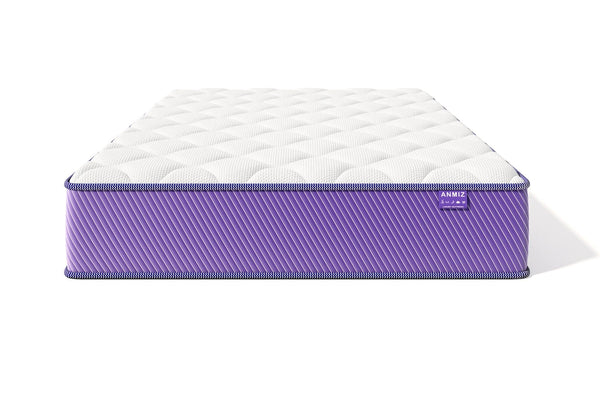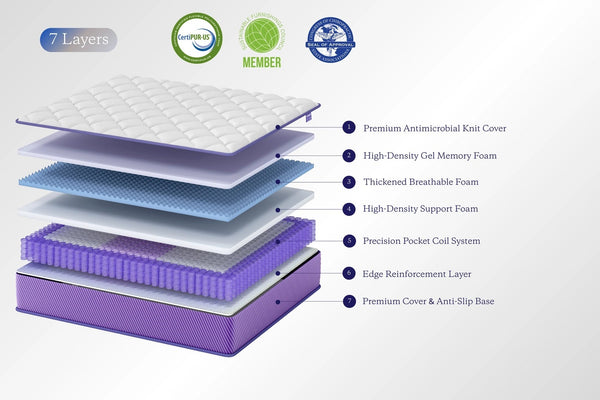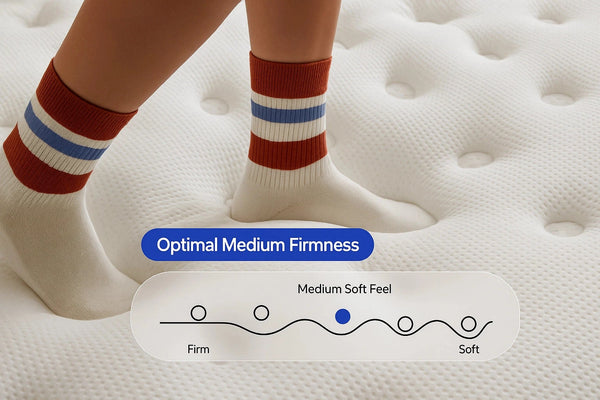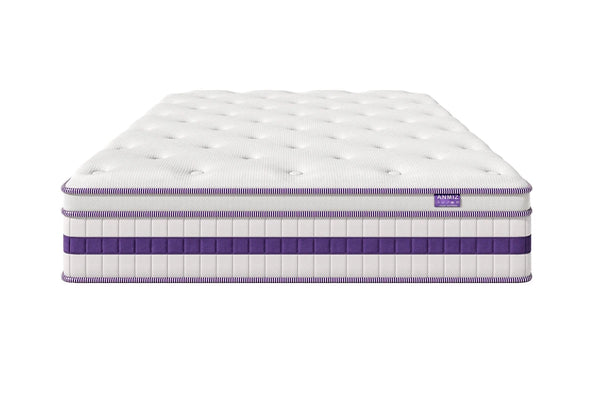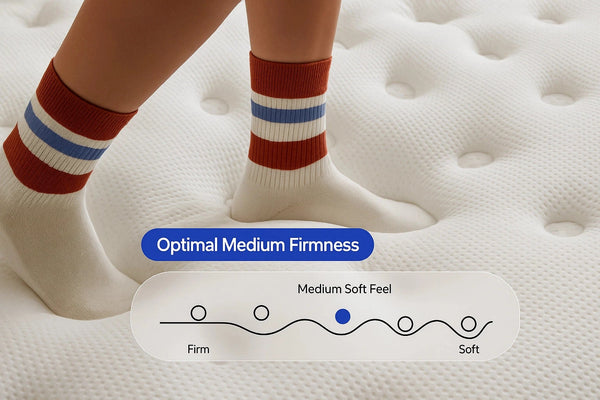Back pain is the worst—especially when it steals your sleep. You toss, turn, and wake up feeling like you ran a marathon in your dreams. But here’s the good news: choosing the best mattress for back pain can seriously change your life. The right mattress supports your spine, reduces pressure points, and gives your body a chance to recover overnight.
Understanding What Your Body Really Needs
Where Exactly Does It Hurt?
Let’s start with a simple question: Where is your back pain? Is it lower, upper, or more toward the middle? Knowing that can make a huge difference in finding the right mattress.
If it’s your lower back, you’ll want a mattress that offers zoned lumbar support. These types of mattresses are designed to offer extra firmness in the lower back region while being softer under your shoulders and hips. That’s like having a mattress that knows your body better than your best friend.
Now, if your pain moves around or changes from day to day, adjustable firmness might be your best friend. Airbeds and hybrid mattresses that allow you to tweak the firmness can give you that sweet spot of comfort every night—even if your body’s being unpredictable.
What’s Your Sleep Style?
Are you a side sleeper? A stomach sprawler? Or maybe a classic back sleeper? Whatever your preference, your sleep position plays a big role in how your mattress feels—and how your back feels after a night's rest.
Side sleepers usually need something on the softer side. Think memory foam or soft hybrid mattresses that cushion your shoulders and hips without caving in. Meanwhile, back sleepers typically benefit from a medium-firm feel that supports the spine’s natural curve. As for stomach sleepers, they should steer clear of anything too soft—unless you like waking up with a sore neck and an aching lower back.
Not sure where you fall? Head to a mattress store and try lying down in different positions. Yeah, it might feel a little awkward lying down in public, but your back will thank you later.
Crucial Features You Don’t Want to Miss
The Real Deal About Firmness
Let’s bust a myth: firm doesn’t always mean better. Sure, if your mattress is too soft, your body sinks out of alignment. But if it’s too firm, it can push on pressure points and make things worse.
Research shows that medium-firm mattresses are usually the sweet spot for back pain. They offer the support your spine needs while still being comfy enough to sleep on. So unless your doctor tells you otherwise, skip the rock-hard beds.
Say Goodbye to Pressure Points
Imagine lying on a mattress that hugs your body just right. That’s what pressure-relieving materials like memory foam and latex do. They mold to your shape, spread out your weight, and reduce those annoying pressure zones that can make your back pain worse.
Want the best of both worlds? Try a hybrid mattress. You get the bounce and airflow of coils plus the cozy contouring of foam. It's like getting a high-five from your mattress every night.
Comparing Mattress Types (Because One Size Never Fits All)
Foam vs. Innerspring vs. Latex
Let’s break it down with a quick chart so you can see what’s what:
| Type | Support | Comfort | Best For |
|---|---|---|---|
| Memory Foam | High | Very Soft, Contouring | Back & Side Sleepers |
| Innerspring | Medium | Firm, Bouncy | Hot Sleepers |
| Latex | High | Responsive & Cooling | Eco-conscious users |
| Hybrid | Customizable | Balanced | Chronic Back Pain |
Why choose one over the other? Because your body, sleep habits, and comfort levels are different from anyone else’s. Don’t just follow trends—follow your spine.
What Makes Hybrid Mattresses Stand Out?
If you’re someone who wants it all—support, cushioning, airflow, and bounce—a hybrid mattress might be your golden ticket. It’s built with both foam and coils to give you targeted support and plush comfort in one neat package.
Many hybrids now come with zoned support, meaning they’re firmer under your lower back and softer under your shoulders. Think of it as a mattress that multitasks—kind of like your favorite pair of sneakers that look cool but also support your arches.
Don’t Overlook These Bonus Features
Motion Isolation—Peace for You and Your Partner
Ever wake up because your partner flopped over like a tuna? That’s where motion isolation comes in. It keeps movement on one side of the bed from disturbing the other.
Memory foam excels at this. If you or your partner tosses and turns all night—especially due to back pain—this feature is a game-changer.
Stay Cool, Sleep Better
Have you ever tried sleeping on a mattress that turns into a furnace by midnight? Yikes. Overheating can make your back pain worse and interrupt your sleep cycle.
Look for cooling technology like gel-infused foam, breathable covers, or ventilation systems. These materials wick away heat and keep you comfortable all night long—even when the AC’s working overtime.
Wait—Do You Even Need a New Mattress?
Could the Problem Be Your Old Mattress?
Ask yourself: when did I last buy a mattress? If it’s been over 7 years, your bed may be more worn out than you think. Old mattresses lose their shape and support, leading to misalignment and—you guessed it—more back pain.
You wouldn’t keep using worn-out shoes with holes in the sole, right? The same logic applies here.
Should You Upgrade or Add Support?
If a brand-new mattress isn't in the budget, consider a mattress topper or a more supportive bed frame. Toppers made with memory foam or latex can add comfort and extend the life of your current bed.
Sometimes all your bed needs is a little boost. Just don’t expect miracles from a thin, cheap topper—invest in quality where it counts.
Common Questions Answered (Because We’ve All Wondered)
Is Firmer Always Better?
Not at all. In fact, too-firm beds can make things worse. A mattress that’s like sleeping on a sidewalk won't adapt to your body’s curves. You’ll need that slight give to reduce strain on your hips and shoulders while keeping your spine straight.
Can a Pillow Make a Real Difference?
Absolutely! A supportive pillow keeps your neck in line with your spine. If you’re a back sleeper, look for a pillow that fills the space between your neck and mattress. Side sleeper? You need one that holds your head level with your shoulders.
Let’s Wrap This Up with a Plan
What You Can Do Today
You don’t need to suffer through another night of bad sleep. Start by evaluating your mattress: is it saggy? Does it support you evenly? If not, it might be time for an upgrade.
Try out different mattresses in a store, read honest reviews, and prioritize features that match your sleeping style. And hey, bring your pillow to the store—no judgment here.
Because Sleep Isn’t a Luxury—It’s a Necessity
Your sleep affects everything: your mood, energy, posture, even your ability to think clearly. Investing in the best mattress for back pain isn’t just a purchase—it’s a commitment to your health.
So go ahead. Say goodbye to those painful mornings and hello to restful nights. Your back deserves it. And so do you.

